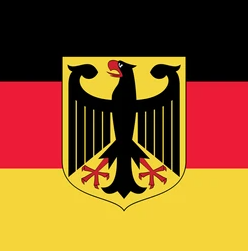Let’s explore Austria National Emblem. When it comes to Austria, there are many things that come to mind, including its rich history, stunning landscapes, and its famous cultural contributions. One thing that people may not know about Austria is its national emblem, a symbol that represents the country’s heritage, culture, and people. In this article, we will explore the history and significance of Austria national emblem, as well as its various components and how it has evolved over time.
The national emblem of Austria is a symbol of the country’s identity, reflecting its long and diverse history. The emblem is composed of several components, including a shield, a crown, and an eagle. The shield is divided into four quadrants, each representing a region of Austria: Upper Austria, Lower Austria, Styria, and Tyrol. The eagle is perched on top of the shield, representing strength, power, and freedom.
The History of Austria National Emblem
The origins of Austria national emblem can be traced back to the Middle Ages, when the ruling Habsburg dynasty used a coat of arms featuring an eagle on a red background. Over time, the coat of arms evolved and became more elaborate, incorporating various elements of Austria history and culture.
In 1919, after the end of World War I and the dissolution of the Austro-Hungarian Empire, the Republic of Austria was established, and a new national emblem was adopted. This emblem was similar to the previous coat of arms, but with several key differences, such as the removal of the imperial crown and the addition of the four quadrants representing Austria regions.
Components of Austria National Emblem
As mentioned earlier, Austria national emblem is composed of several components, each with its own significance and meaning. The shield, for example, represents the unity of Austria regions, while the eagle represents strength and freedom. The crown, which was added to the emblem in the Middle Ages, symbolizes the country’s royal past.
The shield is divided into four quadrants, each with its own unique design and color scheme. The upper-left quadrant features a red-and-white-striped shield, representing Upper Austria. The upper-right quadrant features a golden lion on a red background, representing Lower Austria. The lower-left quadrant features a black panther on a green background, representing Styria. The lower-right quadrant features a red eagle on a white background, representing Tyrol.
Evolution of Austria National Emblem
Over the years, Austria national emblem has undergone several changes and revisions. In 1934, the emblem was modified to include a wreath of oak leaves around the shield, symbolizing strength and stability. During World War II, the emblem was changed once again, with the eagle facing right instead of left, as it had previously. After the war, the emblem was restored to its original design.
In 1984, a new version of the national emblem was adopted, featuring a simplified shield design and a more naturalistic depiction of the eagle. This version of the emblem is still in use today.
Significance of Austria National Emblem
The national emblem of Austria is a symbol of the country’s heritage, culture, and people. It represents the unity of Austria regions, as well as its royal past and its commitment to freedom and strength. The eagle, in particular, has long been associated with Austria, appearing in various forms throughout the country’s history.
Importance of Austria National Emblem in Modern Times
Today, Austria national emblem is an important symbol of the country’s identity and is used in various official capacities, such as on government documents and on the country’s flag. It is also a popular tourist attraction, with many visitors to Austria seeking out the emblem to take photos and learn more about its history.
In addition to its historical and cultural significance, Austria national emblem is also important from a branding and marketing perspective. The emblem is recognized around the world, and is often used to promote Austria and its various products and services.
Conclusion
In conclusion, Austria national emblem is a symbol of the country’s rich history, culture, and people. It has evolved over time, reflecting the changing political and social landscape of Austria, but its core components and meanings have remained largely unchanged. Today, the emblem continues to be an important symbol of Austria identity and is recognized around the world.
FAQs:
Q: Why is the eagle an important symbol in Austria?
A: The eagle has long been associated with Austria and represents strength, power, and freedom.
Q: What do the colors in Austria national emblem represent?
A: Red and white are the national colors of Austria, while the other colors in the emblem represent the country’s regions.
Q: How has Austria national emblem changed over time?
A: The emblem has undergone several changes and revisions throughout history, but its core components and meanings have remained largely unchanged.
Q: Is Austria national emblem used for branding and marketing purposes?
A: Yes, the emblem is recognized around the world and is often used to promote Austria and its various products and services.
Q: Where can visitors to Austria see the national emblem?
A: The national emblem can be seen in various locations throughout Austria, including on government buildings and on the country’s flag.
References:
- “National Emblem of Austria.” Encyclopedia Britannica, https://www.britannica.com/topic/national-emblem-of-Austria.
- “The Coat of Arms of Austria.” Austrian Information, https://www.austria.org/the-coat-of-arms-of-austria.
- “National Emblem of Austria.” Austrian Embassy London, https://www.bmeia.gv.at/en/austrian-embassy-london/about-austria/national-emblem-of-austria/.

